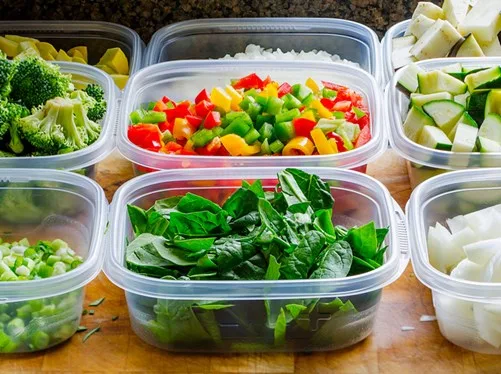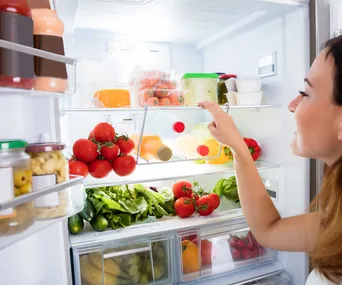About a quarter of us say lack of time is a barrier to eating better; it’s one of the most commonly mentioned obstacles. Long work days, parenting and household duties can leave us with little time and energy to prepare nourishing home-made meals.
Thus, into our lives slip processed foods, convenience meals and takeaways. They’re often quick, easy, cheap and filling, but they don’t promote good health, because most processed meals are higher in energy, sugar, sodium and saturated fat and therefore less nutritious than home-cooked ones.
A healthy diet is possible without spending hours in the kitchen if you devote a little time to planning and preparing meals. Once that becomes routine, you’ll find you have to expend considerably less time and effort to produce good food.
Maybe you’re thinking, ‘I don’t even have time to start the planning.’ Often when we say we’re too busy to cook, we mean it’s not a priority – and sometimes that’s a perfectly acceptable explanation. I could say I’m too busy to clean up my messy kitchen drawer, but the truth is it’s simply not that important to me. So what about healthy eating for you?
Try saying this aloud: “Healthy eating is not a priority.” If you’re not comfortable with that statement, because healthy eating is a priority for you, then make sure it is by scheduling time to get started.
1. Plan
Set aside 10-15 minutes this weekend to come up with main meals – your easy family favourites – for the coming week. This will save you time and stress.
2. Double up
Cook two batches of every meal – whether it’s beans, mince, chilli, casserole, sauces, soups or grains (rice, quinoa). Eat one on the day and freeze the other.
3. Create versatile meals
Find basic recipes you can enjoy in a number of different ways. For example, a mince dish to use as a base for a shepherd’s pie, tacos and quesadillas; and roasted chicken to eat with root vegetables, in a salad, and shredded in sauce over rice.
4. Create spin-off meals
Save time by planning ahead for your next meal each time you cook. Cook an extra chicken breast or steak, or boil half a dozen eggs, that you can use in sandwiches or salads for lunch or as the basis for a salad dinner the following night.
5. Transform leftovers into tomorrow’s lunch
Use leftover meat, cooked veges or salad as fillings for a wholegrain wrap, for example.
6. Think small
Stock up on small vegetables such as cherry tomatoes, baby beetroot and carrots, pickled onions, olives, radishes and baby-leaf salads. Then you can quickly throw a salad together without chopping or cutting.

7. Use frozen vegetables
They’re nutritious and ready for cooking.
8. Buy prepped fresh vegetables
They save time, whether it’s pre-chopped pumpkin or packaged salad greens.
9. Grate rather than chop
Quickly add fruit and veges to a dish by simply washing and grating them rather than chopping and dicing.
10. Stock up on time-saving staples
Keep wholegrain pasta and cans of no-added-salt tomatoes, lentils and beans in your pantry for adding to casseroles.
11. Let time do the work
Using a slow cooker saves you the bother of having to cut up and brown meat; a large piece that has simmered for eight hours can be shredded with a fork and served in its juices.
12. Use your slow cooker for breakfast
Put oatmeal or porridge ingredients into the cooker in the evening and they’ll be ready by morning.
13. Opt for one-pot meals
Casseroles and stir-fries made in a single dish reduce clean-up time.
14. Eat quicker-cooking grains
Quinoa, for instance, takes about 15 minutes to cook and is more nutritious than white rice.
Remember, if healthy eating is a priority for you, schedule time this week for meal planning, work on establishing a meal-preparation routine and make a start on batch-cooking healthy dinners.
This article was first published on the NZ Listener.



